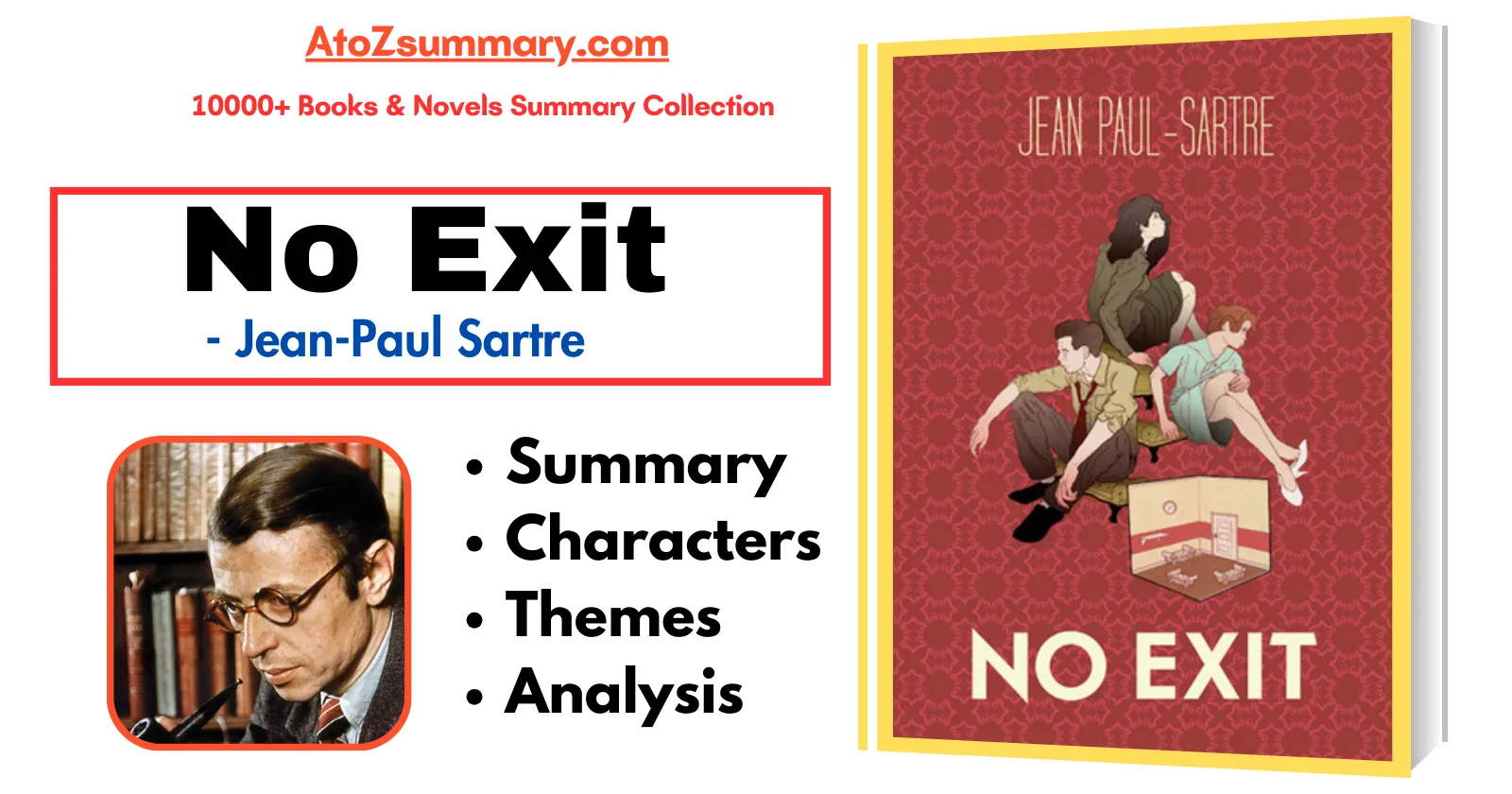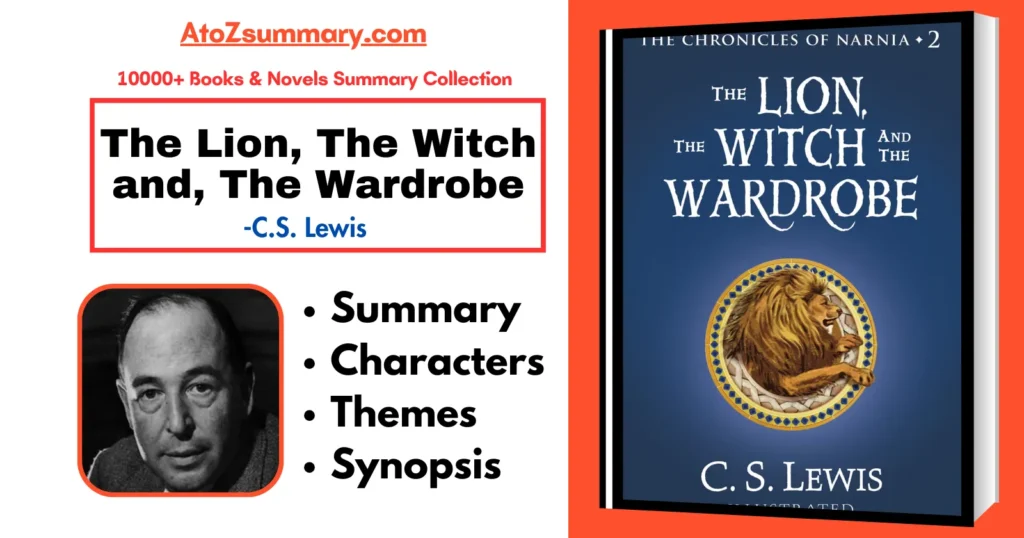Analysis
No Exit is a play by Jean-Paul Sartre where three characters end up in a room that seems like the afterlife. They expect torture, but instead, they just have each other. The story is about how they start to realize that they’re stuck in a cycle of making each other unhappy. The play’s main idea is that we’re dependent on others’ opinions, and this can make life like living in a kind of ‘hell’. The characters face their past actions and can’t escape or hide from each other. It’s all about how they torment each other just by being themselves. It shows how our relationships and how we see ourselves are important in life.
| Title | No Exit |
| Author | Jean-Paul Sartre |
| Publication Year | 1945 |
| Genre | Existentialist play, philosophical drama |
| Setting | A windowless room in Hell, furnished with a few items |
Themes
The themes of the play “No Exit” by Jean-Paul Sartre are:
- Hell is other people ➤ The play shows how we can feel trapped or uncomfortable in the company of others. The characters in the story make each other unhappy and restless, highlighting how our relationships with others can be challenging and cause us distress.
- No escape from oneself ➤ The characters in the play cannot leave the room or the things they’ve done in their lives. They are stuck with their own thoughts and actions, unable to run away from their past. This suggests that we are responsible for our choices and have to live with the consequences.
- Self-deception and truth ➤ The characters eventually face the truth about themselves and their lives. They cannot hide from their mistakes or flaws, showing that honesty with oneself is essential, even if it’s uncomfortable. This theme emphasizes the importance of being truthful with oneself and others.
Characters
In the play “No Exit” by Jean-Paul Sartre, there are three main characters:
- Garcin ➤ He’s a journalist, kinda nervous. He’s worried about how he’s seen by others. He feels bad because he didn’t do brave stuff during his life.
- Inès ➤ She’s a bold and sharp-tongued woman. She’s honest, but sometimes too much. She admits to causing harm to others during her life.
- Estelle ➤ She’s a bit vain and romantic. She’s upset because she feels unloved. She relies on others for her happiness.
Watch “No Exit” Full Play Summary & Analysis
Summary
The play begins in a vacant space. Three couches, a mantelpiece, a lamp, a paper-knife & a bronze ornament are among the few decorations in the room. Enter Joseph Garcin, accompanied by the Valet. The chamber is Garcin’s everlasting resting place now that he is deceased. Garcin envisions his eternity as a conventional hell complete with fire, brimstone, and torture devices. Garcin learns from the Valet that sleeping in the afterlife is not possible. The Valet leaves right away, leaving Garcin to explore the room alone for a while.
Returning alongside Inez Serrano is The Valet. It is also her afterlife destination, the room. Inez believes Garcin to be the torturer she was assigned. Garcin clarifies that he is not in any way like that. They are devoid of any reflective surfaces since there are no windows or mirrors. For a long while, Inez and Garcin sit in silence as she refuses to be courteous to him. Garcin agitates Inez, and the two start bickering before the Valet comes back.
The Valet presents Estelle Rigault, the third and last person in the room. By now, Garcin has covered his face with his hands, leading Estelle to believe he is a faceless person. Erroneously, she thinks that Garcin is her ex-lover who took his own life because of her.
As the Valet departs, the three settle in. While the other two are having their funerals, Estelle describes hers. The three spoke about how they passed away: Estelle from pneumonia, Garcin from desertion, and Inez from a gas stove. In his dreams, Garcin sees his wife standing outside the barracks where he used to work, waiting for him. The spectator discovers that the three characters watch things happen on Earth anytime they are conceived of or stated through the visions of Estelle and Garcin.
Garcin, Estelle & Inez attempt to ascertain the purpose of their shared chamber. Originally from various cities, the three of them had never met. Inez is certain that they are together for a purpose and that there are no coincidences involved. She thinks their sins are involved. The three tell each other their experiences, but they save some important information for later in the play. Tormenting each other requires them to be together, they decide. They all swear to be silent, and it takes a very long time for Inez and Estelle to start speaking. To assist Estelle with her cosmetics, Inez serves as her mirror. Estelle is applying cosmetics to draw Garcin so she may feel more feminine, even if Inez makes it obvious she is drawn to her. Estelle refuses to accept Inez’s advances.
There is no stillness, and Garcin is furious. To understand why they are together, he insists that they each reveal their deepest secrets. Garcin, who planned to create a pacifist journal and avoid being inducted into the war, was slain at the border. In addition, he openly cheated on his wife and gave her terrible treatment. To help her brother and herself escape poverty, Estelle married a much older affluent guy. Then she started dating someone, unintentionally became pregnant, and drowned the kid. Consequently, her partner ended his own life. Living with her cousin, Inez wooed Florence, his wife. After Florence moved in with Inez and left her husband, the cousin passed away in an unconnected accident. Then, as they slept, Florence used a gas stove to murder herself and Inez.
Each of the three loses their final link to Earth one by one. The final evidence of Inez’s existence is removed when her apartment is rented out to a new couple. After finding out about her sinister secrets, Peter, a boy Estelle had feelings for, moves on from her. Garcin’s wife passed away, and his former coworkers have mostly forgotten about him. The trio of protagonists represents the final living souls that are cognizant of each other’s existence.
Garcin thinks he’s unmanly and a coward. Garcin appreciates Inez’s perspective, but she thinks him a coward as well. Garcin seeks to woo Estelle because he wants to feel like a hero. Fearful of Inez, Estelle longs to be feminine & wants Garcin in return. The door to the room unexpectedly opens as the three take turns teaming up to fight each other two-on-one. They all decide to stay together since none of them can bring themselves to leave each other’s company.
Because of Inez’s opinion, Garcin finds it difficult to approach Estelle and pursue her. He remains because he thinks that by having Inez see him as more than just a coward, he will be saved. Thinking back on his decision to stay, Garcin declares, “Hell is other people” (46-47). Estelle tries to kill Inez with the paper-knife because she wants Garcin to affirm her femininity. Estelle is reminded by Inez that the knife is pointless because they are all dead. Inez makes her point by stabbing herself. Together, they all chuckle at how ridiculous their situation is. As the performance comes to a finish, they are all sitting on their couches and silently looking at each other.
FAQs
What is the main message of No Exit?
The main message of No Exit is that we are all trapped in our own hell, created by our own choices.
Why is the play called No Exit?
Because the three characters are trapped in hell forever with no way out.
What is Inez’s punishment in No Exit?
Inez’s punishment in No Exit is to be trapped with two other people she hates forever.
What is the main conflict in No Exit?
Three people trapped in hell together are forced to confront their own flaws and the flaws of the others.
What was Jean-Paul Sartre’s famous saying?
Jean-Paul Sartre’s famous saying from the play “No Exit” is: “Hell is other people.”
What is the French title of No Exit?
Huis Clos
What is the significance of No Exit?
It is a powerful and thought-provoking play that explores the nature of human existence and the relationship between the individual and the other.
What do the characters learn about themselves in No Exit?
They learn about their own flaws and the flaws of the others










![Regretting You Summary, Themes, Synopsis & Characters [Book by Colleen Hoover] Regretting You Summary, Themes, Synopsis & Characters [Book by Colleen Hoover]](https://atozsummary.com/wp-content/uploads/2023/05/Regretting-You-Summary-Themes-Synopsis-Characters-Book-by-Colleen-Hoover-1024x576.webp)
